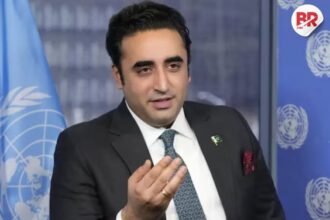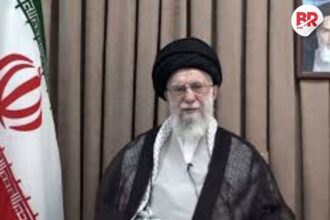
From allies to enemies—how did the US and Iran become locked in a dangerous nuclear standoff?
The 1953 Coup: The Beginning of Distrust
It all started in 1953 when the US and UK orchestrated a coup to overthrow Iran’s Prime Minister, Mohammad Mossadegh. Why? Because he nationalized Iran’s oil, hurting Western profits. The US restored the Shah to power, but Iranians never forgot—or forgave.
1979 Revolution: A Turning Point
Decades of the Shah’s oppressive rule led to the 1979 Iranian Revolution. Ayatollah Khomeini took over, declaring Iran an Islamic Republic. When Iranian students seized the US Embassy, holding 52 Americans hostage for over a year, the US-Iran relationship shattered.

The Iran-Iraq War: America Backs the Enemy
In the 1980s, Iran fought a brutal war with Iraq. Shockingly, the US supported Saddam Hussein—even after he used chemical weapons. Iran saw this as betrayal, fueling its desire for self-reliance, including nuclear technology.
Also Read: Missiles Ready: Iran Responds to Trump’s Bombing Threat
Nuclear Fears and Sanctions
By the 2000s, the US feared Iran was building nuclear weapons. Harsh sanctions followed, crippling Iran’s economy. In 2015, a deal was struck—the JCPOA—where Iran agreed to limit nuclear activities in exchange for sanctions relief. But peace didn’t last.
Trump’s Exit and Rising Tensions
In 2018, President Trump pulled the US out of the deal, slapping even tougher sanctions on Iran. Iran retaliated by restarting uranium enrichment. Then, in 2020, a US drone strike killed Iran’s top general, Qasem Soleimani. War seemed imminent—but both sides stepped back.
Also Read: Trump Threatens to Bomb Iran—Khamenei’s Reply? ‘We Won’t Be Intimidated’
Where Are They Now?
Today, talks to revive the nuclear deal are stuck. Iran keeps expanding its nuclear program, while the US tightens sanctions. The world watches nervously—will diplomacy win, or will conflict explode?
This isn’t just a US-Iran problem. A conflict could spike oil prices, disrupt global trade, and drag other nations into chaos. For countries like India, balancing ties with both sides is a tightrope walk.
Also Read: Iran Rejects Direct Nuclear Talks with Trump, Open to Indirect Negotiations












